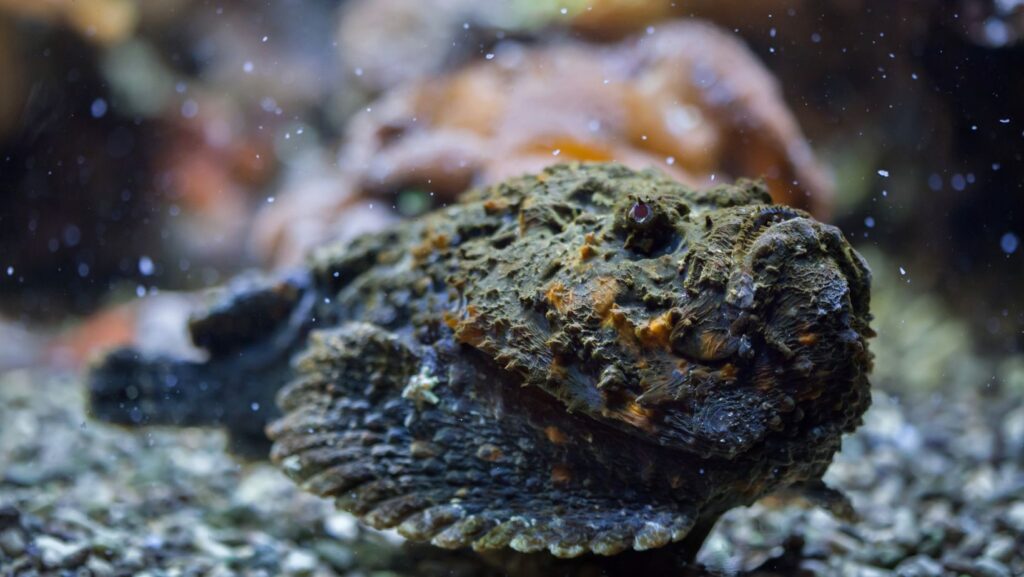The Stonefish: Master of Camouflage and Venom
The underwater world is home to a myriad of fascinating and often mysterious creatures. Among them, the Stonefish (Synanceia) stands out as a master of both camouflage and venom. Found in the Indo-Pacific region, these remarkable fish are known for their lethal capabilities and unique adaptations.

Physical Characteristics
The Stonefish is aptly named for its incredible ability to blend seamlessly with its surroundings. With a body covered in mottled patterns and rough textures, it closely resembles a piece of coral or a rocky seabed. This camouflage serves as both a means of protection from predators and a method of ambush for hunting prey.
Measuring up to 40 centimeters in length, the Stonefish has a stout and compressed body. Its dorsal fin spines are a key feature, with 13 spines capable of delivering potent venom. These spines are sharp and well-camouflaged, making the Stonefish a formidable opponent for any creature that dares to approach.
Habitat and Distribution
Stonefish are primarily found in the coastal regions of the Indo-Pacific, including the Red Sea, the Indian Ocean, and the Pacific Ocean. They inhabit shallow waters near coral reefs, rocky areas, and sandy bottoms. Their choice of habitat allows them to effectively blend in with their surroundings, making them difficult to spot for both predators and prey.
Venomous Defense
The Stonefish is renowned for possessing one of the most potent venoms among fish. The venom is stored in glands at the base of its dorsal fin spines, and when threatened, the fish raises its spines, injecting venom into anything that touches them. The venom contains a potent mix of proteins and peptides that can cause intense pain, tissue necrosis, and even death in extreme cases.
Despite its dangerous nature, the Stonefish does not actively seek out confrontation. Instead, it relies on its superb camouflage to avoid detection, only using its venomous spines as a last resort when threatened.
Hunting Techniques
Stonefish are ambush predators, lying in wait for unsuspecting prey to pass by. Using their exceptional camouflage, they patiently wait for small fish and invertebrates to come within striking distance. When the moment is right, the Stonefish strikes with lightning speed, engulfing its prey in its large mouth.
Human Encounters and Precautions
Due to their excellent camouflage and the potentially fatal consequences of their venomous spines, Stonefish pose a significant threat to humans. Accidental encounters can occur when wading in shallow waters or exploring coral reefs. The pain from a Stonefish sting is excruciating, and immediate medical attention is crucial to minimize the effects of the venom.
To avoid encounters with Stonefish, it’s essential for individuals to exercise caution when navigating coastal areas known for their presence. Wearing protective footwear and taking slow, deliberate steps can reduce the risk of accidentally stepping on a hidden Stonefish.
Conservation Status
Stonefish populations face threats from habitat destruction, overfishing, and environmental changes. While they are not currently classified as endangered, ongoing conservation efforts are essential to ensure the health of their ecosystems and maintain the delicate balance of marine life.
In conclusion, the Stonefish is a marvel of underwater adaptation, showcasing the beauty and danger coexisting in the diverse world beneath the waves. Understanding and respecting these fascinating creatures are crucial for both their conservation and the safety of those who explore their habitats.








